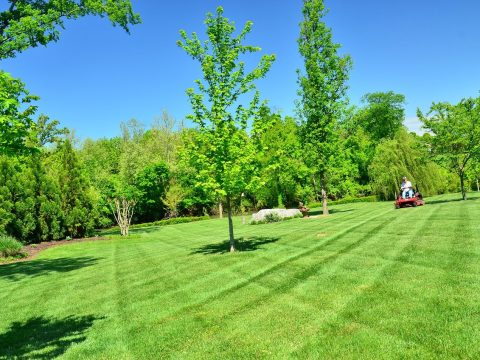- Southern Acres Landscape & Design, LLC
- (843) 609-7492
How often you should water your grass

How often you should cut your grass
June 5, 2023
What type of weed killers to use on grass
June 15, 2023The frequency of watering your grass depends on various factors such as climate, soil type, grass species, and the current weather conditions. Proper watering is essential to maintain a healthy lawn. Here are some general guidelines to consider when determining how often to water your grass:
- Grass Type: Different grass species have varying water requirements. Cool-season grasses like Kentucky bluegrass and tall fescue generally require more frequent watering compared to warm-season grasses such as Bermuda grass or zoysiagrass. Research the specific watering needs of your grass type to determine the appropriate frequency.
- Climate and Weather: Consider the climate of your region and the prevailing weather conditions. If you live in an area with hot and dry summers, you may need to water more frequently to prevent drought stress. On the other hand, cooler and wetter climates may require less frequent watering. Be mindful of rainfall patterns and adjust your watering schedule accordingly.
- Soil Type: The soil type in your lawn affects water retention and drainage. Sandy soils drain water quickly, while clay soils hold moisture for longer periods. Sandy soils may require more frequent watering, while clay soils may need less frequent watering to avoid over-saturation. Understanding your soil type will help you determine the appropriate watering frequency.
- Deep Watering: It’s generally recommended to water deeply and infrequently rather than shallowly and frequently. Deep watering encourages the grass roots to grow deeper into the soil, making them more resilient to drought. Watering deeply means applying enough water to penetrate the root zone, typically about 6-8 inches. This can be achieved by watering for a longer duration but less frequently.
- Watering Signs: Observe your lawn for signs of water stress. If the grass blades start to wilt, turn a dull bluish-gray color, or leave footprints when walked on, it’s an indication that your lawn needs water. Water before these signs become severe to prevent damage.
As a general rule, most lawns require about 1 inch of water per week, including rainfall. This can be divided into two or three watering sessions. However, it’s essential to adjust this guideline based on the factors mentioned above. Watering deeply and infrequently helps promote healthy root growth and reduces the risk of disease.
By considering the grass type, climate, soil type, and observing the signs of water stress, you can establish a watering schedule that keeps your lawn adequately hydrated and promotes a thriving, lush appearance.



